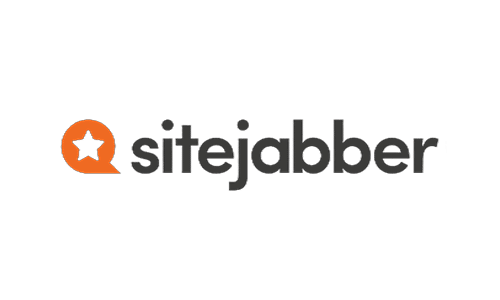What is SEO Poisoning?
Search engine optimization (SEO) poisoning is a technique used by malicious actors to manipulate search engine rankings for certain websites or content. The primary goal of SEO poisoning is to deceive search engines and users by artificially boosting the visibility and ranking of malicious or low-quality websites or content.
The most common goals of SEO poisoning includes
Distributing malware
Malicious actors may use SEO poisoning to promote websites that host or distribute malware. By manipulating search engine rankings, they aim to attract unsuspecting users to these websites, where they may be tricked into downloading malicious software or becoming victims of various cyberattacks.
Phishing attacks
SEO poisoning can be employed to promote phishing websites. These websites mimic legitimate platforms or services to trick users into revealing sensitive information like login credentials, financial details, or personal data. By manipulating search engine results, attackers can increase the visibility of their phishing sites, making them appear more legitimate to potential victims.
Blackhat SEO techniques
Some individuals or organizations engage in SEO poisoning to artificially boost their website rankings and visibility using unethical or prohibited techniques. These techniques violate search engine guidelines and may include keyword stuffing, hidden text, cloaking, or link manipulation. The goal is to deceive search engines into ranking their websites higher than they deserve, leading to increased traffic and potentially more revenue.
Defamation or negative reputation
SEO poisoning can also be employed as a means to damage the reputation of individuals, businesses, or organizations. By manipulating search engine rankings, attackers may promote negative content, false information, or defamatory material about their targets. This can harm their online reputation, credibility, and overall image.
It’s important to note that Search Engine Optimization poisoning is an illicit and unethical practice, and search engines continuously work to improve their algorithms and combat such manipulative techniques. Users should exercise caution when clicking on search results and maintain up-to-date security measures to protect themselves from potential risks.
How is SEO poisoning planned?
SEO poisoning, also known as search engine poisoning or search engine result page (SERP) poisoning, typically involves a deliberate and planned approach by malicious actors. Here are the common steps involved in planning SEO poisoning:
Keyword research
Malicious actors conduct keyword research to identify popular and relevant search terms related to their malicious intentions. They target keywords that have a high search volume and are likely to attract a significant number of users.
Website selection
The attackers choose one or more websites to exploit for their SEO poisoning campaign. These websites are often compromised or created specifically for this purpose. They may be legitimate websites that have security vulnerabilities or have been compromised by hackers.
Malicious content creation
The attackers create or modify content on the selected websites to align with the targeted keywords. They may generate new pages or inject malicious code into existing pages. This content is designed to deceive search engines by appearing relevant to the targeted keywords, while actually containing malicious elements or low-quality content.
Manipulation techniques
Various manipulation techniques are employed to deceive search engines and improve the ranking of the malicious content. These techniques may include keyword stuffing (repeatedly inserting targeted keywords), hidden text (text that is not visible to users but can be read by search engines), cloaking (presenting different content to search engines and users), or link manipulation (creating artificial links to the malicious content).
Link building
The attackers engage in link building strategies to increase the visibility and credibility of the compromised or malicious websites. They may create links from other websites, including legitimate ones, to the targeted pages. These links can help to improve the search engine ranking of the malicious content and make it appear more trustworthy.
Monitoring and adaptation
Once the SEO poisoning campaign is launched, the attackers monitor the search engine rankings and user traffic to evaluate the effectiveness of their efforts. They adapt their strategies and content as needed to maintain or enhance their positions in the search results.
Real World Example of Search Engine Optimization poisoning
There have been several real-world examples of Search Engine Optimization poisoning campaigns carried out by malicious actors. Here are a few notable instances:
Lizamoon Attack: In 2011
The Lizamoon attack infected thousands of legitimate websites, including government, educational, and commercial sites. The attackers exploited vulnerabilities in website platforms to inject malicious JavaScript code. This code redirected users to rogue antivirus sites, increasing their visibility and potentially infecting users’ systems.
The New York Times SEO Poisoning
In 2013, attackers targeted the website of The New York Times by injecting malicious code that redirects users to rogue websites. The attack exploited vulnerabilities in the website’s advertising platform, resulting in the display of fraudulent ads. This poisoned the search engine results for certain keywords related to The New York Times, leading users to compromised websites.
Google Image Poisoning
In 2018, a widespread Search Engine Optimization poisoning campaign affected Google Image search results. The attackers manipulated image metadata and injected malicious code into websites to associate them with popular search terms. As a result, users searching for certain images were redirected to malicious websites hosting malware or promoting scams.
WordPress Pharma Hack
The WordPress Pharma Hack is a well-known example of SEO poisoning that has affected numerous WordPress websites. Attackers exploit vulnerabilities in outdated or poorly secured WordPress installations to inject spam links into the affected websites’ content. These links typically promote illicit pharmaceutical products, boosting the visibility of rogue online pharmacies in search engine results.
Blackhat SEO Techniques
Various instances of SEO poisoning involve blackhat SEO techniques that artificially boost website rankings. For example, attackers may engage in keyword stuffing, creating multiple low-quality pages optimized for targeted keywords. These pages may not offer any valuable content but are designed to rank high in search results, potentially leading users to malicious or irrelevant websites.
Conclusion
It’s worth noting that search engines employ algorithms and techniques to detect and penalize websites engaging in Search Engine Optimization poisoning. They continuously update their algorithms to combat such manipulative practices. Users are advised to follow safe browsing practices, maintain up-to-date security measures, and rely on reputable sources when conducting online searches.
One must note that search engine companies actively work to identify and combat SEO poisoning techniques. They continuously update their algorithms and security measures to protect users from malicious content and maintain the integrity of their search results.
Hire one of the best search engine optimization agency India to avoid such issues or if got troubled then our best digital marketing agency in Noida will help you to recover from this.
This writing is a sole effort of SEO experts of Growth Wonders Pvt Ltd.




















